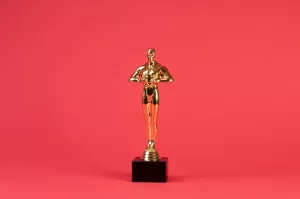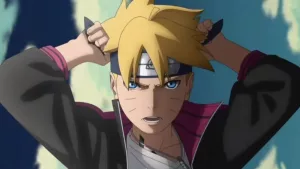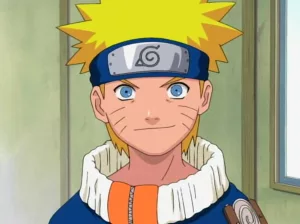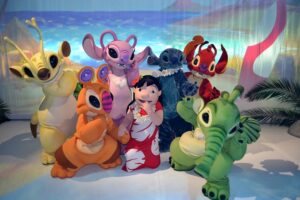Why Is American Animation So Ugly?
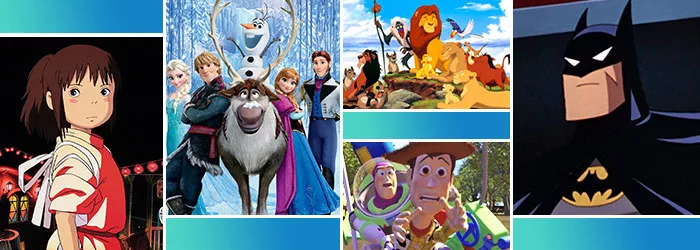
American animation has been a staple of popular culture for decades, entertaining audiences of all ages with its unique storytelling and visual style. However, many people have noticed a trend in recent years – American animation has become increasingly ugly. From bulging eyes to grotesque character designs, many viewers have been left wondering why this is the case.
Some theories suggest that the rise of computer animation has contributed to this trend. With the ability to create more complex and detailed visuals, animators may have become more focused on technical aspects rather than aesthetics. Others argue that it’s simply a matter of taste – what some viewers find ugly, others may find charming or endearing.
Regardless of the reasons behind it, the trend towards ugly American animation has sparked debate and discussion among fans and critics alike. In this article, we will explore the possible reasons behind this trend, examine some of the most notable examples, and consider what it means for the future of animation.
The Beauty is in the Eye of the Beholder
When it comes to American animation, opinions on its visual appeal are divided. Some people love the quirky and unique style, while others find it downright ugly. But as the saying goes, “beauty is in the eye of the beholder.”
Cultural Differences
One reason why American animation may not be aesthetically pleasing to some is due to cultural differences. For example, Japanese anime has a distinct style that is often praised for its beauty and attention to detail. However, this style may not resonate with Western audiences who are used to a different aesthetic. Similarly, the exaggerated features and bright colors of American animation may not appeal to those who prefer a more subtle and realistic style.
Artistic Styles
Another reason why American animation may not be universally appealing is due to the wide range of artistic styles used in the industry. From the simplistic style of South Park to the intricate details of Disney movies, there is no one-size-fits-all approach to animation. Some people may find certain styles more visually pleasing than others, while others may appreciate the diversity and creativity of the industry.
In the end, whether or not someone finds American animation beautiful is a matter of personal taste. While some may find it ugly, others may see it as a work of art. As with any form of art, it is up to the viewer to decide what they find beautiful.
The Evolution of American Animation
American animation has come a long way since its inception in the early 1900s. From its humble beginnings as a novelty act to its current status as a multi-billion dollar industry, the evolution of American animation has been a fascinating journey. In this section, we will take a look at the historical context and technological advancements that have shaped American animation into what it is today.
Historical Context
Animation in the United States began in the early 1900s, with short films being produced by the likes of Winsor McCay and J. Stuart Blackton. These early films were crude by today’s standards, but they were groundbreaking at the time. One of the earliest examples of American animation is “Gertie the Dinosaur” (1914), which featured a character that interacted with the audience.
During the 1920s, American animation began to take on a more commercial tone, with the introduction of characters like Felix the Cat and Mickey Mouse. These characters became household names and paved the way for the Golden Age of American animation in the 1930s and 1940s.
Technological Advancements
One of the biggest technological advancements in American animation came in the form of sound. In 1928, Walt Disney released “Steamboat Willie,” the first animated film to feature synchronized sound. This was a game-changer for the industry and paved the way for more complex storytelling.
Another major technological advancement was the introduction of color. In 1932, Disney released “Flowers and Trees,” the first animated film to be produced in Technicolor. This was a huge step forward for the industry and allowed animators to create more vibrant and expressive worlds.
In the 1950s and 1960s, American animation began to take on a more stylized approach, with studios like UPA and Hanna-Barbera producing shows like “Mr. Magoo” and “The Flintstones.” These shows were less realistic than their predecessors, but they allowed for more creativity in terms of character design and storytelling.
Overall, the evolution of American animation has been a long and fascinating journey. From its early beginnings as a novelty act to its current status as a multi-billion dollar industry, American animation has come a long way. With new technological advancements and creative minds at work, it will be exciting to see where it goes next.
The Role of Economics
When it comes to animation, the role of economics cannot be ignored. Budget constraints and market demands play a significant role in determining the style and quality of American animation.
Budget Constraints
Animation is an expensive medium, and studios have to work within their budget limitations. As a result, shortcuts are often taken, and corners are cut. One of the ways studios save money is by simplifying the animation style. The simpler the animation, the less time and money it takes to produce. This is why you see so many American cartoons with a flat, two-dimensional look. It’s not that the animators can’t produce more detailed work; it’s that they don’t have the time or money to do so.
Market Demands
The other factor that influences the style of American animation is market demands. Studios have to create content that will appeal to a mass audience. Unfortunately, the mass audience tends to prefer simpler, more accessible styles of animation. This is why you see so many American cartoons with a “CalArts” style. It’s a style that is easy to produce and appeals to a wide range of viewers.
Of course, this doesn’t mean that all American animation is ugly. There are plenty of examples of beautiful, detailed animation being produced in the United States. However, it does mean that the economics of animation play a significant role in determining the overall style and quality of American animation.
The Impact of Television and Streaming Platforms
Influence of TV Shows
American animation has been a staple of television for decades. From the classic Looney Tunes to modern hits like The Simpsons and Family Guy, animated shows have been a part of American culture for generations. However, the influence of television on animation has not always been positive.
TV shows often have tight budgets and tight deadlines, which can lead to animation studios cutting corners and simplifying their designs. This can result in the “ugly” art style that many people associate with American animation.
Rise of Streaming Services
The rise of streaming services has had a significant impact on the animation industry. With platforms like Netflix, Hulu, and Amazon Prime Video, there is now more demand for animated content than ever before. This has led to an increase in the number of animated shows being produced, but it has also changed the way that animation is made.
Streaming services often have larger budgets and longer production schedules than traditional TV shows, which allows animation studios to create more detailed and complex designs. However, this also means that there is more pressure to create content that will stand out in a crowded market, which can lead to studios experimenting with different art styles.
Overall, the impact of television and streaming platforms on American animation is complex. While TV shows have often been limited by tight budgets and deadlines, the rise of streaming services has opened up new opportunities for animation studios to create more ambitious and visually stunning shows.
Why ‘Ugly’ Might Actually Be ‘Beautiful’
American animation has a reputation for being cute, colorful, and fun. But what if there’s another side to animation that we’re overlooking? What if “ugly” animation is actually beautiful in its own unique way?
Breaking Norms
One of the reasons “ugly” animation can be so appealing is that it breaks the norms of what we expect from animation. Instead of perfectly proportioned characters and smooth movements, “ugly” animation embraces rough edges, glitches, and imperfections. This can create a sense of authenticity and rawness that’s hard to replicate in more polished animation styles.
Embracing Uniqueness
Another reason “ugly” animation can be so beautiful is that it celebrates uniqueness. Instead of trying to fit characters into a specific mold, “ugly” animation allows for a wider range of body types, facial features, and personalities. This can be especially important for viewers who don’t see themselves represented in more traditional animation styles.
Of course, “ugly” animation isn’t for everyone. Some viewers might find it off-putting or hard to watch. But for those who are willing to look beyond the surface, there’s a whole world of beauty to be found in the unconventional, the imperfect, and the “ugly.”

